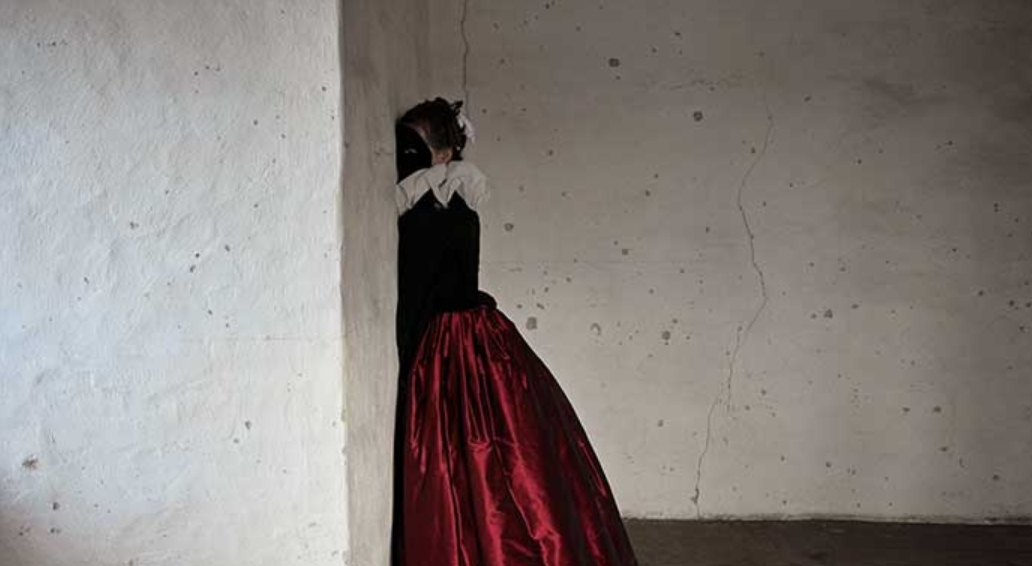The location of the video was the oldest manor house in Finland, Qvidja Gård in Parais. The sound world is built from the sounds of the collar and suit recorded in the studio. The video was filmed by Riku Kankaro, the sound engineer was Eduard Tampu.
The costumes in the video were designed and sewn by Tiina Majabacka according to historical sewing techniques and patterns. The process of sewing the suit took more than a year. Just sewing the jacket by hand was a job of months. The style of the costume takes place at the end of the 16th century, and it is a combination of different influences from the fashion of the time. Noble women of the era wore a black face mask covered with velvet fabric to protect their facial skin from the sun. The mask made the woman mysterious and mute. The materials of the clothing are natural. They add their own blend of scents to the garment: real wool, linen, silk and horsehair. The collar is sewn by hand from ramie fabric, which was already in use in ancient Egypt. Traditionally, the millstone collar was made of linen, but today it is almost impossible to get linen that is thin enough and good enough for the needs of the collar.
Due to their fragile nature, only a small number of original collars have been preserved in museums around the world. Tiina Majabacka has studied and photographed these two. In the collections of the National Museum of Finland, there is part of a folded collar, which is estimated to be from the early 17th century. In Stockholm’s Livrustkammaren, there is a lace-decorated frilled collar from around 1620.
The ringing memory of the millstone collar is Majabacka’s artistic thesis for the interdisciplinary master’s program Visual Cultures, Curating and Contemporary Art (ViCCA) of Aalto University’s Department of Art and Media. The work is the second part in Majabacka’s series about historical and forgotten costume sounds, the first part of which was Suppressed Recitative (2020).
Tiina Majabacka (b. 1980) works multidisciplinary in the fields of video art and costume design. His videos are short films, performative and use improvisation. Majabacka’s works contain many-faceted references, e.g. to the history of fashion and art, literature and cinematography. He graduated as a visual artist from Turku Academy of Arts in 2019.




